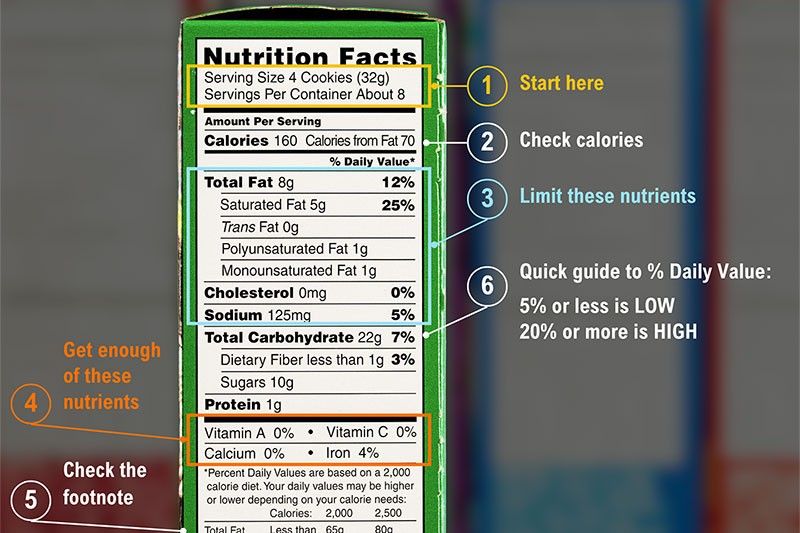
Upgrade to High-Speed Internet for only ₱1499/month!
Enjoy up to 100 Mbps fiber broadband, perfect for browsing, streaming, and gaming.
Visit Suniway.ph to learn
MANILA, Philippines — The figures are alarming. In the Philippines, the number of overweight children, or those weighing more than what’s healthy for their age and height, has almost tripled since 2003.
Obesity is an even bigger concern, as obese children, more than just being overweight, run the higher risk of developing serious health problems, such as diabetes. Overweight and obesity levels in the country, when combined, are alarmingly high by global standards.
This is why it is urgent for parents to start doing something about the problem while the kids are young and the condition can still be reversed. Now is the best time to start doing something about it.
Health experts and the United Nations child rights agency UNICEF are advocating for the government to introduce front-of-package nutrition labels simple symbols on food packages to quickly show if a product is high in sugar, salt, or unhealthy fats.
The food label or nutrition facts at the back of a product may be the key.
While mandatory front-of-package nutrition labels are being pushed, parents can still make smart choices by checking food labels at the back of every product. With so many baby snacks and convenient, ready-to-eat foods available, this small step can go a long way in keeping children healthy and happy.
Here is how you can make smarter picks at the grocery store.

A product's food label is a handy guide to help parents make healthy choices
1. Start with the serving size
The serving size tells you how many servings each product contains and how many grams or pieces is considered as one serving. Take note that nutritional information will be based on just one serving. Consider this when serving your kids the product.
For example, the label might say "4 cookies" but a typical three-year-old child only needs about 1, 350 calories daily. If one serving (4 cookies) contains 160 calories, and your child eats 8 cookies (160 calories per serving x 2 servings = 320) for the day, that is already almost one-fourth of the daily energy needs.
2. Check the calories
This number shows the energy your child gets from each serving.
Here is a quick guide to what children typically need per day:
- 1–3 years old: 920–1,000 kcal
- 4–6 years old: 1,200–1,400 kcal
- 7–9 years old: 1,400–1,800 kcal
- 10–12 years old: 1,800–2,200 kcal
- 13–18 years old: 2,000–2,600 kcal (boys) and 1,800–2,000 kcal (girls)
While having a snack is okay, keep in mind their other meals for the day. For example, serving 8 cookies is already equivalent to 320 calories, which may be fine for a teenager but may be too much for a four-year-old.
3. Limit unhealthy fats, added sugar, and salt
Fats, sugar, and salt are fine in small amounts but should stay low to prevent unhealthy weight gain.
Opt for snacks with less than 5 grams of saturated fat, 10 grams of added sugar, and 200 milligrams of sodium per serving.
4. Check the type of fats
Some food labels list “calories from fat,” or how much of the total energy in one serving comes from fats. For instance, if a snack has 160 calories per serving, and 70 come from fats, nearly half might not have come from healthy sources.
When it comes to fats, the type of fat is just as important as the amount.
Healthy fats, like those from nuts, fish, and seeds, are important for brain development and energy. They even protect you from unhealthy saturated fats, often found in fried or processed foods.
The World Health Organization recommends keeping saturated fats under 10% of daily calories and avoiding trans fats entirely to keep your child healthy.
5. Check the ingredients list
Watch out for hidden sugars in the ingredients list. Often, these are called “sucrose” or “corn syrup.”
Take note, as well, that the ingredients are listed in descending order of weight. This means that the first one or two ingredients mentioned in the list are the ones that make up the largest portion of the product.
6. Look for good nutrients
Children need fiber, vitamins, and minerals (like iron and calcium) to grow strong and healthy.
While some snacks add these nutrients, it is best to find food that naturally have them, like fruits and whole grains. For instance, children four to six years old need 300 mg. calcium and 10 mg. iron daily.
So, if a product offers at least 10 to 20% of these daily requirements, it is a helpful addition to your kids’ meals.
7. Check the footnote
The footnote explains the % Daily Value (DV), which is based on an adult’s daily nutrient needs. While children need fewer calories, you can still use the % DV to estimate the amount of nutrients in a product.
For example, the image shows 0% DV for calcium, meaning the product does not provide it. Preschoolers need about 550 mg. calcium daily, so make sure their other snacks or meals can provide this.
8. Try balancing the % Daily Value
The % DV shows how much one serving of the product provides toward our specific daily need of calories or certain nutrients.
Aim for high percentages (20% or more) in nutrients like fiber, calcium, and iron, but keep sugar, salt, and fat low (5% or less). If a snack has 25% DV of sugar, it might be too sweet for younger kids, so consider a healthier alternative.
Visit www.unicef.ph to know more about the work UNICEF Philippines is doing for every child, everywhere.
RELATED: How front-of-pack labels and food content creators help consumers eat smarter

 2 months ago
21
2 months ago
21
_2025_06_27_19_58_32.jpg)


